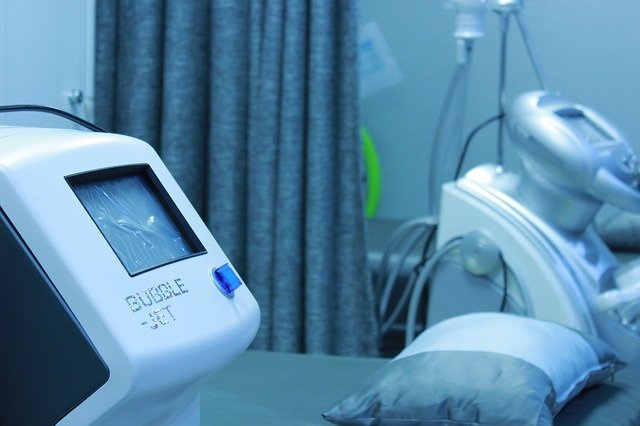Weight Loss Surgery
In this article, we will discuss two important weight loss surgery procedures:
1. Gastric Sleeve
A gastric sleeve surgery, also known as a sleeve gastrectomy, is an option for people that aren’t eligible or don’t qualify for other bariatric procedures. Bariatric surgeries require a BMI (body mass index) of at least 40. Gastric sleeve surgery requires you to be at least 80 to 100 pounds overweight. During surgery, they remove part of the stomach and create a new tube-shaped stomach. This reduces the size of your stomach making you feel full sooner. Thus, lowering the amount of food you can eat at one time. This irreversible surgery lasts about one hour, but most patients will be on bed rest for two or three days. Try to avoid making any strenuous activity if possible for the next two to four weeks.
What to expect
After you receive general anesthesia, your surgeon will make several incisions to your abdomen so they can insert the laparoscope, a tool with a tiny light and camera that sends pictures to a nearby computer. After the laparoscope is inserted, they will then start to remove close to three-quarters of your stomach. Then they will create a new thin tube-shaped stomach to span the original distance from the esophagus to the small intestine.
Serious complications due to a gastric sleeve and any other stomach reduction surgeries are very rare. Most serious complications are likely to occur during the first month following the procedure. Complications include staple line leaks and thrombosis. Thrombosis is an infection or blood clots in the surgical wound site. Prior to the procedure, your surgeon will review all potential risks and complications with you. Before your procedure, you can lower your gastric sleeve surgery risks by exercising regularly to lower your body mass index and quit smoking.
Average patients who undergo gastric sleeve surgery lose more than half their excess body weight. Resulting in an improvement to obesity-related health problems as well as a decreased feeling of depression. Gastric sleeve surgery is great for weight loss in a straightforward manner. It does not require maintenance or have any long-term complication rates of a lap band.
Cost
Gastric sleeve surgery costs an average of $14,900. The price is relative to lap band surgery. Before committing to gastric sleeve surgery, you should determine if your insurance provider will cover you. Without insurance, the gastric sleeve surgery can cost up to $23,000. Most insurance companies will cover gastric sleeve surgery.
2. Lap Band
Lap band surgery, also known as gastric band surgery or AGB, can improve obesity-related health issues. It is a simple procedure that lasts roughly one or two hours. This surgery should only be considered if you have a BMI of at least 30. Sometimes, the exception is made for people with a BMI in the high 20’s.
Before undergoing lap band surgery, you need to establish a diet. About two weeks before surgery, you need to make sure you are drinking plenty of water. Protein and vegetable intake needs to be increased, while carbs and sugars are cut out of your diet. Your surgeon may ask you to stop taking medication two days before your surgery. Do not eat, drink, or use tobacco twelve hours before surgery.
What is going to happen?
Essentially, a lap band surgery is a laparoscopic procedure that wraps an adjustable band around the top part of your stomach. This creates a small stomach pocket above your stomach making it easier to get full. As mentioned above, by getting fuller sooner you will not eat as much. Undergoing lap band surgery will help you lose anywhere from 25% to 75% of your excess weight. It can improve or cure any obesity-related problems.
Surgeons use one of two techniques while performing lap band surgery. The perigastric technique is the original technique used, but it is associated with slippage rates of up to 25%. The more commonly used technique today is called the pars flaccida technique. It has reduced slippage rates to a lower 1.4%.
If you want to improve issues with diabetes, hypertension, hyperlipidemia, asthma, and sleep apnea, then a lap band surgery is right for you. A patient suffering from comorbidities can lose up to 55% of their excess weight in two years. Lap band surgery is not a magical procedure. It takes time to affect you. It is recommended to eat healthy foods and be on a good diet after going through lap band surgery. Surely, this will help the lap band do its job.
Something to Consider
The lap band surgery can improve your quality of life. Also, the lap band surgery can reduce obesity-related cancers. A data collection on cancer research was performed with a sample of 88,000 patients. The results showed that patients who go through weight loss surgery have 33% less risk of developing cancer.
Weight loss surgery is something you should consider, but remember that the final decision is made by your physician. The decision made by a doctor will rely on the patient’s overall health, current BMI, and any other health issues caused by comorbidity. Lap band surgery can turn your life around. Obesity-related health issues can finally become a problem of the past.
Insurance
Check your wallet because lap band surgery is expensive without insurance. It can cost anywhere between $8,700 to $29,000; it is often paid for with monthly payments. Fortunately, insurance can pick up most of the tab depending on your condition. However, insurance requires that patients have a BMI of at least 35. A person must be affected by at least two weight associated conditions. The weight associated conditions insurance recognizes are diabetes, hypertension, hyperlipidemia, asthma, and sleep apnea. The patient must be able to prove that their condition is not responding to treatment. Patients with a BMI of 40 or higher do not need to show proof of any weight associated conditions for their treatment to be covered by insurance. It was only a few years ago that lap band surgery was considered experimental and not covered by insurance.








